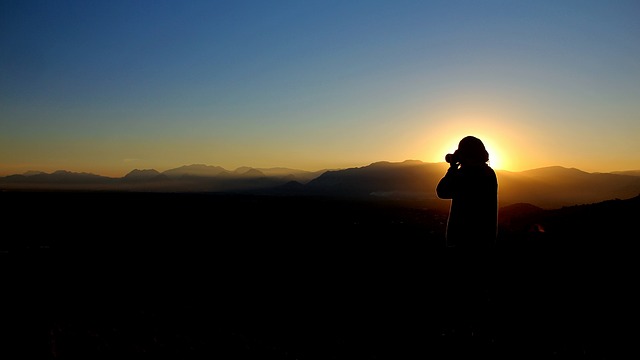
There is more to photography than merely capturing an image in a focused shot with good lighting. It is definitely a method of art. It is an art-form that has so many skills and techniques to learn as any other art form. You will want to look for things that are interesting and appealing to the eye, as well as see details. Read on for some tips that will help you improve your photography.
Test varying shutter speeds to learn which speed works best for certain scenarios. You can choose to leave the shutter open and capture the night sky as it swirls overhead, or set if for a fraction of a second to capture high speed action. Using a faster shutter speed will let you catch objects while they are in motion, while a slow shutter speed is great for capturing serene natural settings.
Choose carefully what will show in your shot. A great picture will allow the viewer to see a little window into specific characteristics of the subject in the photograph. Don’t try to put everything into a single photo. If you want to give a more general impression of something, take a series of pictures, instead of a single image without a clear subject.
Keep things simple when trying to capture a great shot. You can usually take a stunning picture without playing with advanced settings.
Don’t allow the overcast skies to sneak into your pictures. Your pictures can appear dull and lifeless if they capture too much of a gray sky in the background. If you have to shoot with an overcast sky, use black and white methods of photography. A clear blue sky is always lovely in a photo, but adjust your settings to account for bright light.
Keep your arms in close to your body while holding your camera, and position your hands on each side and the bottom of the camera. This will help to steady and reduces the number of blurred shots you take. Putting your hands beneath the lens and camera, instead of on top, prevents you from dropping your camera accidentally.
Many photographers ignore the foreground in their shots focusing on the background, but the foreground is what the viewer will see.
A dSLR is a necessity if you’re aiming to be serious about your photography. This type of digital camera will give you the most accurate view of your subject as you snap the picture. If you want the largest image sensor, as well as the most highly detailed images, choose a full-frame DSLR.
This tip you improve your photos! Learn about the shutter has. There are P, P, A, and S settings on your camera. The “P” setting for program mode. This will have the shutter speed ad aperture speeds automatically. If you have no idea what settings you want, just use “P” setting.
Blur the background when shooting photos of shots with people in them just a little bit. You can accomplish this by having your background farther away from your subject.
You shouldn’t neglect the foreground as many novice photographers do. Focusing first and foremost on the foreground of a landscape shot will help you to produce a more striking photograph with greater depth.
Take a few pictures of your souvenirs when you travel. This helps create a more memorable connection with the objects and sights from your souvenirs that you can enjoy when you return home.
Most modern digital cameras have a flash that automatically deploys when the light is dim. This is wonderful for taking a quick photo, but if you want more professional results, you need the wider lighting options you can get by using an external flash.
Ensure you have an extra charged battery so you do not miss the greatest photos. Digital cameras using an LCD screen require lots of power, so check the batteries before you need to take pictures. Another good suggestion is to bring along spare camera batteries so that you will never miss a photo opportunity.
You will have to play with ISO, ISO and aperture. These features that drive the exposure. You want to wind up with underexposed or underexposing a picture except in some special cases.
Another interesting look is to ask the subject focus on someone or something within the shot.
Keep your camera handy when you are on a trip. Use it often. Although they may not seem to matter much at the time, they can help you vividly remember your journey when you think back about it. Consider photographing things like signs on the street, odd storefronts, tickets to a museum or the food sold by street vendors.
Good camera focus is a critical element in composing your picture and perspective.Especially in the beginning, your main subject should be in view and centered.
Practice Shots
Pictures of people are great. You must always seek permission first. After you get home from your trip, these images will provoke thoughts and memories, even if they are nothing more than ordinary. Try to get a candid expression with casual clothing.
Take plenty of practice shots when you are adjusting to new subject or backdrops. Every situation can produce different results, and taking practice shots will give you a feel for the environment. Try taking practice pictures at different times of the day to get a different lighting.
As you can see, there’s more to photography than bright lighting and sharpness. You can really step up the quality of your photos if you do.
Try to get as close as you can to your photo subject. If you are too far away, you will lose the details of your subject. The result of a close shot will be a vivid picture that you will enjoy more.